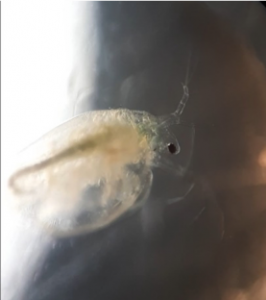by Ian Grist, Environmental technician
If you are a property owner with a river, creek, or stream nearby, you may be concerned or curious about the health and pollution levels in the water. There are ways you can find out the contaminate levels present in your water by what aquatic organisms you observe. In particular, benthic macro-invertebrates are excellent bio-indicators of freshwater health. Macro-invertebrates do not have a backbone and are visible to the naked eye. They live on the bottom of a water body, often in the substrate. Since they spend large parts of their lifecycle in the water, they are very sensitive to different levels of pollution they encounter over their lifetime.
Researchers use macro-invertebrates as bio-indicators, or “living indicators”, because of their short life-cycle, the fact that they are all genetically similar, and because of their sensitivity to a broad range of contaminants and pollution. In each aquatic ecosystem, there are tons of different macro-invertebrate species present and every species has different tolerance levels to pollution. For example, Daphnia sp. (pictured below), also known as water flea, is very sensitive to contaminants. Finding these species in your stream is a good sign of a healthy ecosystem. The presence or absence of zooplankton is also a good indicator of a polluted stream or river.

Some of the low tolerance macro-invertebrates include caddisflies, dragonflies, water pennies, stoneflies, and mayflies. Finding these means the ecosystem is healthy. If, however, you only find any black flies, aquatic worms, or midges, this may indicate your stream or river is contaminated as these species are all tolerant to higher levels of pollution.
I encourage you next time you are out on the water to bring a net and some small containers to see what species of benthic macro-invertebrates are in your local stream or river. Not only will you discover a bit more about the health of your local aquatic ecosystem, but you can also submit your findings to an online citizen science platform like iNaturalist. Happy adventuring!
References
Frostburg State University. (2007, August 1). REGIONAL MATH/SCIENCE CENTER. Retrieved from Frostburg: https://www.frostburg.edu/student-life/rmsc/_files/pdf/projects/2007macros.pdf
Grist, I. (2020). Daphnia sp. Photo.
